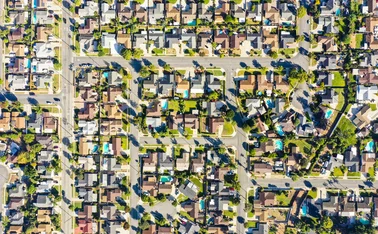
Construction challenges in the Bay Area Development
Zhu Xian, vice-president of the New Development Bank, explains how top-level design is needed to allow each of the three major conurbations in the Bay Area Development to play to their strengths


The strategic importance of the Guangdong–Hong Kong–Macao Greater Bay Area (the Bay Area Development) reaches far beyond China to the rest of the world. But the great potential in the development of the Greater Bay Area should not lead us to underestimate the challenges.
Hong Kong and Macao intersect
The Bay Area Development concept arose out of an increasing maturity of the development environment and economy in the region. In the past 30 years, the Pearl River Delta (PRD) economic zone, as the frontier of China’s reform and ‘opening‑up’ policy, has earned a reputation as a ‘modern world factory’, while undergoing a marked transformation from a low-income economy to a high-income one. It narrowed the gap with developed economies by advancing the construction of infrastructures and proliferating economic interconnections with Hong Kong and Macao. Reviewing the past 30-year period of reform and opening‑up, it is clear that the economic development of the PRD couldn’t have been achieved without Macao and, in particular, investment and financial support from Hong Kong. Today’s economic maturity is building on 30 years of regional integration. A trend for further integration is obvious, and the potential for a world-class Greater Bay Area megacity is promising.
The Bay Area Development shares common traits with the successful major bay areas in New York, San Francisco and Tokyo in terms of infastructure, including convenient transportation, similar commercial service centres and investment/financing platforms, crucial manufacturing hubs, human-labour capital, and a range of scientific research and higher‑education institutions.

Creating a regional hub
An important internal condition of the construction of the Bay Area Development is in the integration and division of labour. On the one hand, the advent of the Bay Area Development will result in deeper economic integration in the region. On the other, a top-level design is necessary to expedite rational division to avoid internal expense and redundant construction.
The Bay Area Development will be the hub of the Belt and Road Initiative’s (BRI’s) construction through industry gradient transfer. In other words, the region should establish an economic belt dominated by the Bay Area Development, building an economic hinterland in the Pearl West Economic Belt and driving growth in the mid-south and southeast regions of China – possibly extending out to south and Southeast Asia. But consideration should also be given to resource sharing and internal urban integration of the Bay Area Development.
Economic aggregates in Guangzhou, Shenzhen and Hong Kong are almost equal, which drives the need for a strategic view of the cities’ division and respective identities in the development of the Greater Bay Area. In terms of division, emphasis should be placed on innovating shipping and ports, and finance and technology. In light of Hong Kong’s position as an international port of transshipment, Guangzhou and Shenzhen – each with their own unique functions – should compete and differentiate themselves as ports. Hong Kong is an international finance centre, Shenzhen is the finance centre of south China and Guangzhou is developing a financial industry to become a regional financial services centre. In technology innovation, Hong Kong boasts a well-established financial infrastructure and mature capital markets. Shenzhen aims to become China’s equivalent of Silicon Valley, and Guangzhou is planning a future as an international innovation hub. These cities require diverse top-level design to ensure competition over division of labour can proceed seamlessly.
The other nine cities in the PRD should also clearly identify their strategic positions. Under this premise, they could learn from each other, avoid local protectionism and disorganised competition, and enhance overall competitiveness, gaining benefits by allowing local synergy to flourish.
Financial innovation
Financial innovation is a unique strength of the Bay Area Development – during construction, the cities will make financially innovative contributions of their own. Shenzhen has the qualities to become the pinnacle of innovation, generating new development forces and advancing traditional industry; Guangdong has well-established industry and stable manufacturing foundations; and Hong Kong can exert financial strength through mature capital markets and financial services. As part of an interconnecting mechanism, the Bay Area Development will form integrated superiorities in financial innovation, which will provide broader investment and financing platforms for regional enterprises and drive it towards the top of the global value chain.
Hong Kong has become a business hub for global offshore renminbi while the type and magnitude of renminbi investment products in the market is increasing. Therefore, innovative capital in the Bay Area Development will have more approaches to outward expansion, while Hong Kong can meet the requirements of regional offshore renminbi settlement financing and asset management.
In the future, China should strive to cultivate financial co-operation platforms in Guangdong, Hong Kong and Macao; to further two-way opening‑up and the connectivity of financial market elements between mainland China and Hong Kong, and mainland China and Macao; and to build a financial hub to lead the PRD and expedite Asia’s ability to serve the BRI .
An equal stake
Although the construction of the Bay Area Development offers promising potential for further development, challenges are inevitable and should never be underestimated.
First, under the ‘one country, two systems’ framework, construction of the Bay Area Development requires the innovation of institutional mechanisms. There is a divide between Guangdong, Hong Kong and Macao in regard to their institutions, cultures and business operations. Achieving institutional innovation through top-level design and integrated consensus will therefore be a challenge, and China must strengthen co-
ordination between policy and planning, maximise the benefits of one country, two systems, and minimise the cost of diversification.
Second, circulation in the Greater Bay Area must be upgraded. Its integration must expedite the free flowing of key elements – including people, logistics, capital and information in the region – and optimise the allocation of productive factors through market orientation. For example, the customs clearance system should be reformed on the Guangzhou–Shenzhen–Hong Kong Express Rail Link and the Hong Kong–Zhuhai–Macao Bridge to enhance traffic efficiency and maximise the advantages of people and logistics reaching maximum capacity.
At the same time, China should utilise the cities’ complementary and comparative advantages, established in their own areas of strength. Clear recognition of this is required in every region and entity in the Greater Bay Area, allaying the effect of inert thinking and breaking any patterns of interest. The Bay Area Development should pursue complementary development and aim for mutual benefit and win-win outcomes through deeper communication and co-ordination.
Finally, the continuity of policies should be maintained. Governments at all levels in the Greater Bay Area should clearly identify the threshold between government and market by discarding the ‘one case, one project’ model in favour of individual case analyses and evolving conventional preferential policies. In accordance with the instructions set out in the 19th National Congress of the Communist Party of China report, enterprises registered in Chinese territories should be treated equally and fairly, and policies related to the construction of the Bay Area Development should reflect good prospects, continuity, predictability and impartiality under viable conditions to avert variable, uncertain and frequent change. Thus, the market will be able to retain its dominance in resource allocation, providing full access to the leading role of the enterprise.
The announcement of the construction of the Bay Area Development is a strategic move with global significance. However, relying on mere potential and possibility is inadequate – construction will only proceed smoothly if China assesses the Bay Area Development impartially and finds solutions to its attendant problems.
Only users who have a paid subscription or are part of a corporate subscription are able to print or copy content.
To access these options, along with all other subscription benefits, please contact info@centralbanking.com or view our subscription options here: http://subscriptions.centralbanking.com/subscribe
You are currently unable to print this content. Please contact info@centralbanking.com to find out more.
You are currently unable to copy this content. Please contact info@centralbanking.com to find out more.
Copyright Infopro Digital Limited. All rights reserved.
As outlined in our terms and conditions, https://www.infopro-digital.com/terms-and-conditions/subscriptions/ (point 2.4), printing is limited to a single copy.
If you would like to purchase additional rights please email info@centralbanking.com
Copyright Infopro Digital Limited. All rights reserved.
You may share this content using our article tools. As outlined in our terms and conditions, https://www.infopro-digital.com/terms-and-conditions/subscriptions/ (clause 2.4), an Authorised User may only make one copy of the materials for their own personal use. You must also comply with the restrictions in clause 2.5.
If you would like to purchase additional rights please email info@centralbanking.com







